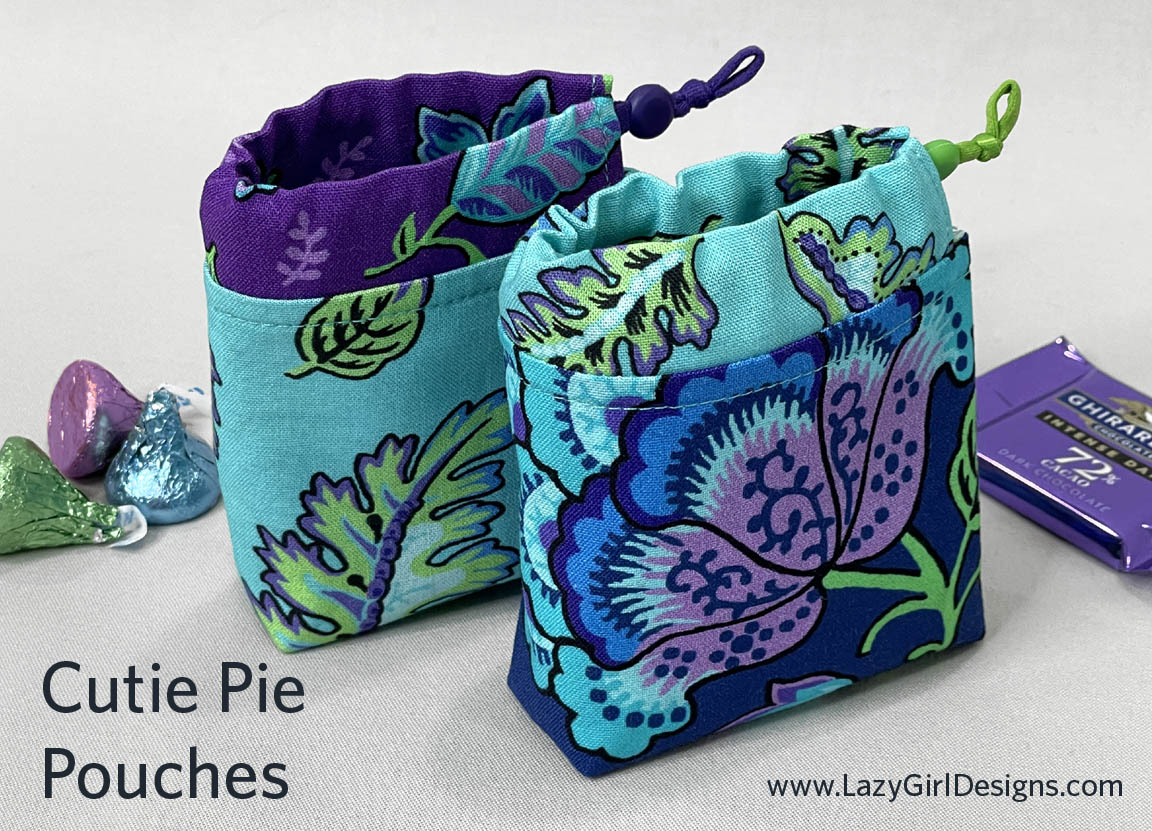To sew a fabric pouch, cut two fabric pieces to your desired size and place them right sides together. Sew around the edges, leaving an opening for turning it inside out.
Sewing a fabric pouch is a simple and rewarding project, perfect for beginners and seasoned crafters alike. These versatile pouches can store anything from coins to makeup, making them functional and stylish. Using various fabrics allows for endless customization, enabling you to express your personal style.
This project requires basic sewing skills and minimal materials, making it accessible to everyone. Whether you’re creating a gift or a practical item for yourself, sewing a fabric pouch is a great way to practice your skills. Follow these straightforward steps to craft your own unique pouch quickly and easily.
Table of Contents
- Introduction To Sewing Your Own Fabric Pouch
- Materials And Tools Needed
- Preparation Steps Before Sewing
- Creating The Pattern
- Cutting And Pinning
- Sewing The Pieces
- Adding A Zipper
- Final Touches
- Troubleshooting Common Issues
- Caring For Your Fabric Pouch
- Next Level Sewing Projects
- Frequently Asked Questions
- Conclusion
Introduction To Sewing Your Own Fabric Pouch
Sewing your own fabric pouch is fun and rewarding. DIY crafting offers many benefits. First, it allows you to express your creativity. You can choose your favorite fabrics and designs.
Making a pouch saves money. Store-bought pouches can be expensive. Creating your own is often cheaper. You can also make gifts for friends and family.
Learning to sew improves your skills. It builds confidence and patience. Each project helps you learn new techniques.
DIY crafting can be a great way to relax. It gives a sense of accomplishment. You will enjoy using your handmade pouch.

Credit: www.youtube.com
Materials And Tools Needed
Choosing the right fabric is important for sewing a pouch. Consider the purpose of the pouch. For a sturdy pouch, opt for canvas or denim. If you want something soft and light, use cotton or linen. Think about the color and pattern too. Bright colors can make your pouch stand out.
Essential sewing supplies include a sewing machine, scissors, and pins. Don’t forget to have thread that matches your fabric. A measuring tape helps ensure accurate cuts. A ruler can assist with straight lines. Finally, a seam ripper is handy for fixing mistakes.
Preparation Steps Before Sewing
Washing your fabric is the first step. This removes any dirt or chemicals. Always follow the care instructions on the label. After washing, iron the fabric to eliminate wrinkles. This helps in cutting and sewing accurately.
Next, cutting the fabric to size is crucial. Use sharp scissors for clean edges. Measure carefully with a ruler or measuring tape. Mark the cutting lines with a fabric marker. Ensure to leave a seam allowance for stitching.
Double-check your measurements before cutting. A small mistake can affect the final product. Keep the fabric flat while cutting to avoid uneven edges. A cutting mat can help protect surfaces and provide a guide.
Creating The Pattern
Start by gathering your materials. You will need paper, pencil, and ruler. Choose a design that fits your style. Simple shapes work best for beginners.
Draw the outline of your pouch on the paper. Use a ruler to keep lines straight. Remember to add seam allowances. This extra space helps when sewing.
Cut out the pattern carefully. Make sure all edges are smooth and even. This will help your pouch look neat. Label each piece clearly to avoid confusion.
Once your pattern is ready, place it on the fabric. Pin it down to prevent movement. Cut around the pattern to get your fabric pieces.
Cutting And Pinning
To cut fabric accurately, start with a sharp pair of scissors. Lay the fabric on a flat surface. Use a ruler to measure and mark the cutting lines. Always double-check the measurements before cutting. This helps avoid mistakes.
For pinning pieces together, use straight pins to hold fabric in place. Space the pins about 2 to 3 inches apart. Make sure the fabric edges are aligned. This step is crucial for a neat finish. Always remove pins before sewing to prevent damage to the needle.

Credit: www.lazygirldesigns.com
Sewing The Pieces
For a strong fabric pouch, use straight stitches and zigzag stitches. These techniques add strength and flexibility. Always use a seam allowance of at least 1/4 inch for durability.
To finish edges, consider using a serger or pinked scissors. This prevents fraying and keeps the edges neat. Pressing seams flat also helps in achieving a polished look.
| Technique | Purpose |
|---|---|
| Straight Stitch | Basic seam for joining fabric |
| Zigzag Stitch | Prevents fraying and adds flexibility |
| Serger | Finishes edges quickly and neatly |
| Pinking Scissors | Creates a zigzag edge to prevent fraying |
Adding A Zipper
Choosing the right zipper is essential for your fabric pouch. Look for a zipper that matches your pouch size. Consider the zipper type: standard, invisible, or metal. Each type gives a different look.
For the installation, follow these steps:
| Step | Description |
|---|---|
| 1 | Measure the opening of your pouch. |
| 2 | Cut the zipper to fit the opening. |
| 3 | Pin the zipper to the fabric. |
| 4 | Sew along the zipper edges. |
| 5 | Trim any excess fabric carefully. |
Final Touches
Pressing the sewn pouch gives it a neat look. Use a hot iron and a pressing cloth. This protects the fabric while avoiding burns. Press all seams flat to ensure they stay in place.
For decorative elements, consider adding buttons, ribbons, or appliqués. These add a personal touch to your pouch. Choose colors that match or contrast with the fabric. Be creative and have fun!
| Decorative Element | Description |
|---|---|
| Buttons | Adds a playful touch to the pouch. |
| Ribbons | Can be used for closure or decoration. |
| Appliqués | Fabrics sewn onto the pouch for design. |
Troubleshooting Common Issues
Uneven stitches can make your pouch look unprofessional. First, check the tension settings on your sewing machine. If the upper thread is too tight, it can cause stitches to look uneven. Loosen the tension slightly and test on a scrap piece of fabric.
Next, examine the bobbin. A poorly wound bobbin can lead to uneven stitching. Make sure it’s wound evenly and inserted correctly. If problems persist, try changing the needle. A dull or damaged needle can create stitching issues.
For tension problems, ensure that both upper and lower threads are correctly threaded. Always refer to your machine’s manual for the right settings. Adjust the upper tension dial for smoother stitches. Remember to test your adjustments before sewing your pouch.
Caring For Your Fabric Pouch
To keep your fabric pouch looking great, regular cleaning is important. Use a damp cloth to wipe the surface. For deeper cleaning, hand wash in cold water with mild detergent. Avoid harsh chemicals to protect the fabric.
Let the pouch air dry completely before storing it. Never use a dryer, as heat can damage the fabric. For stains, treat them quickly with a gentle stain remover.
Store your DIY pouch in a cool, dry place. Avoid direct sunlight to prevent fading. Use a dust bag for extra protection if needed.
Ensure the pouch is folded neatly to maintain its shape. Keep it away from heavy items that might cause deformation.
Next Level Sewing Projects
Creating a fabric pouch can be fun and rewarding. Use different materials for a unique look. Consider combining cotton, denim, and canvas. Each fabric has its own texture and strength.
Mixing materials can enhance the design. Try adding leather for a stylish touch. Felt can provide a soft feel, while nylon adds durability. Experiment with various patterns and colors.
Using zippers or buttons can change the pouch’s style. Choose closures that match your fabric. A lining can add a polished finish. Test different techniques to see what works best for you.

Credit: www.applegreencottage.com
Frequently Asked Questions
How Do You Make A Simple Cloth Pouch?
To make a simple cloth pouch, cut a piece of fabric to your desired size. Fold the fabric in half, right sides together. Sew the sides, leaving the top open. Turn the pouch inside out. Finally, add a drawstring or tie at the top for closure.
Enjoy your pouch!
How To Sew A Fold Over Pouch?
To sew a fold-over pouch, cut fabric to size. Fold the fabric in half, right sides together. Sew along the sides, leaving the top open. Turn it inside out, fold the top down, and stitch to secure. Add a closure if desired.
Enjoy your new pouch!
How To Make A Zipperless Pouch?
To make a zipperless pouch, choose a durable fabric. Cut two pieces to your desired size. Sew three sides together, leaving one side open. Turn the pouch inside out for a neat finish. Optionally, add a snap or button closure for secure storage.
Enjoy your custom pouch!
How Do You Sew Fabric Mesh?
To sew fabric mesh, use a ballpoint needle and a straight stitch. Secure the edges with a zigzag stitch to prevent fraying. Adjust the tension for smooth feeding. Use a walking foot for even stitching. Test on a scrap piece before starting your project.
Conclusion
Creating a fabric pouch is a rewarding project. It combines creativity with practicality, allowing you to personalize your accessories. Follow the steps outlined in this guide for a successful sewing experience. Enjoy experimenting with different fabrics and designs. Your handmade pouch will be both functional and stylish, perfect for any occasion.
